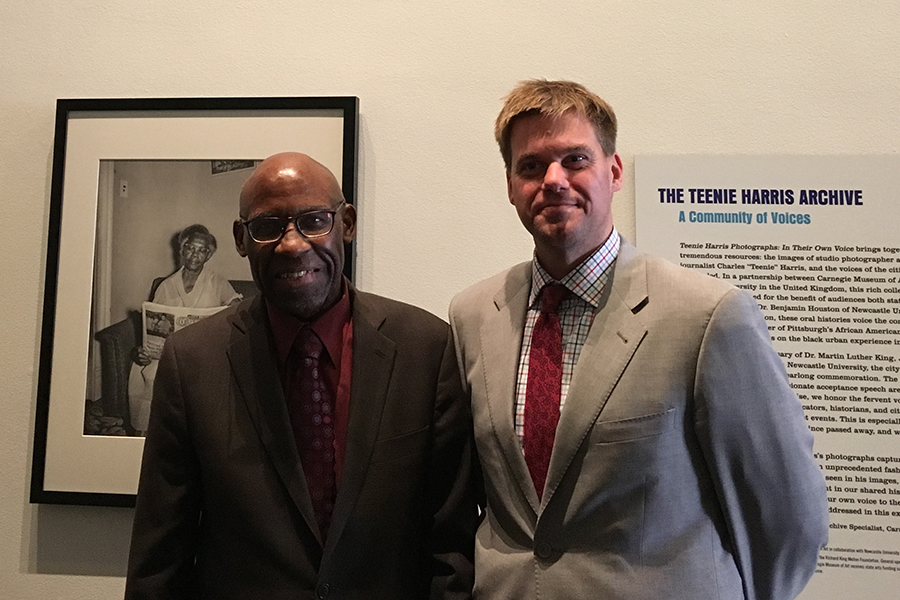
The Voices Behind Teenie Harris’ Photos
By Stefanie Johndrow
From the 1930s to the 1970s, Charles “Teenie” Harris captured Pittsburgh life as one of the principal photographers for the Pittsburgh Courier, one of the nation’s leading black newspapers by the 1930s.
During his more than 40-year career, Harris took more than 80,000 images. Since 2003, the Carnegie Museum of Art (CMOA) has scanned and catalogued 60,000 of those images, one of the most detailed records of the black urban experience known today.
In collaboration with Carnegie Mellon University’s Joe Trotter, Newcastle University’s Ben Houston scaled those down and paired 25 of Harris’ photographs with the voices of people who lived during those times and created the exhibit “Teenie Harris Photographs: In Their Own Voice” at CMOA.
“I was privileged to have access to two tremendously rich historical resources, one being the Teenie archive, the second being our own Remembering African American Pittsburgh oral history project,” said Houston, who directed the Remembering African American Pittsburgh project at CMU. “The latter was of course Joe’s brainchild and one that I’m proud to be associated with in having directed it.”
Houston, under Trotter’s guidance, led the Remembering African American Pittsburgh project from 2006 to 2009. The Remembering African American Pittsburgh project was developed by CMU’s Center for Africanamerican Urban Studies and the Economy (CAUSE) and was funded by Nancy and Milton Washington, the Falk Foundation, BNY Mellon, the Office of Global Philanthropy and the Giant Eagle Corporation. CMU and the University of Pittsburgh recorded 180 oral histories in digital audio, including memories and narratives available nowhere else.
“Our oral history project aimed to create a record of African American life and culture during the late industrial and early postindustrial eras in Pittsburgh’s history,” said Trotter, the Giant Eagle Professor of History and Social Justice. “We expected that these life histories would be an invaluable resource for current and future scholars working on local and 20th century urban America. But the CMU-CMOA-Newcastle exhibit exceeds our expectation for the national and global transmission of these stories well beyond the Pittsburgh region.”
The exhibit at CMOA runs through mid-January, but the full exhibition can be experienced via the app “Not as it is,” developed by FloCulture. For free, users in the United States can view content, create their own photos and submit feedback about the exhibit.
“I hope visitors can take away an awareness of evolving forms of discrimination and how they continue to conspire to perpetuate racial patterns from the past, as well as the resourcefulness and humanity of the African Americans continuing the freedom struggle in all its forms,” Houston said. “As well as an appreciation of the richness and diversity among black Pittsburghers and their central role in the city’s history.”
Pictured: Joe Trotter (left) and Ben Houston (right) at the exhibit “Teenie Harris Photographs: In Their Own Voice” in Pittsburgh.